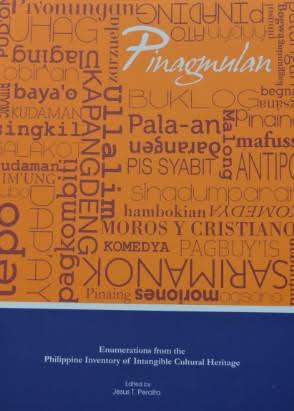
INTANGIBLE cultural heritage (ICH) is defined by the United Nations Educational, Scientific and Cultural Organization (Unesco) as “the practices, representations, expressions, as well as the knowledge and skills (including instruments, objects, artifacts, cultural spaces), that communities, groups and, in some cases, individuals recognize as part of their cultural heritage.”
In the Philippines, experts have so far identified and documented hundreds of intangible cultural heritage elements in the country. Three of them have been inscribed to the Unesco Representative List of the Intangible Cultural Heritage of Humanity: the Hudhud chant and Punnuk ritual of the Ifugao and Darangen epic of the Maranao
The Philippines became a signatory to the Unesco’s Convention for the Safeguarding of the Intangible Cultural Heritage of 2003. And since the passing of the National Cultural Heritage Act of 2009, the National Commission for Culture and the Arts, particularly its Intangible Heritage unit, has intensified the listing of intangible heritage.
The result of the continuous documentation and the subsequent database that was produced out of it thus far is the book, “Pinagmulan: Enumerations from the Philippine Inventory of Intangible Cultural Heritage,” published in 2013 by the NCCA together with the Unesco International Information and Networking Center for Intangible Cultural Heritage in the Asia-Pacific Region (ICHCAP).
Edited by anthropologist and award-winning writer Jesus Peralta, the book is a pioneering and the most extensive publication thus far on Philippine intangible cultural heritage.
The book has essay-contributions from Peralta, former National Museum and Metropolitan Museum Director Corazon Alvina, Peabody Museum of Natural History curator emeritus Harold Conklin, renowned anthropologist Robert Fox, authority in Kalinga culture Fr. Francisco Billet, the great Ivatan scholar Florentino Hornedo, socio-anthropologist F. Landa Jocano, textile expert Dr. Norma Respicio, among others.
Their contributions include intangible cultural elements of the country in five ICH domains—oral traditions and expressions; performing arts; social practices, rituals and festive events; knowledge and practices concerning nature and the universe; and traditional craftsmanship spanning from precolonial Philippines to the traditions and practices of the present.
Some of the elements in the initial inventory include the Maranao folk narrative Radia Indarapatra, Hinalawod epic of the Sulod of Panay, Moros y Cristianos street drama of the Tagalog, kuratsa dance of the Waray, pechen (peace pact) of Bontoc, Magpandipandi of the Yakan of Basilan, Tau’t Batu cosmology, agsana (salt-making) of Ilocos Norte, baor-making (inlaid wooden chest) of Tugaya, Lanao del Sur, and various agricultural, burial and religious practices and traditions of the country.
NCCA Chair Felipe de Leon describes the book in the introductory message as “a celebration of our indigenous, ancient yet contemporary heritage of creative genius and a testament to the profound sources of our cultural identity.”
Finalist for the Elfren S. Cruz Prize for Best Book in the Social Sciences of the National Book Awards in 2014, “Pinagmulan” is indeed an excellent guidebook and a good source of information on the rich and diverse intangible cultural heritage of the Philippines.
Although not commercially available at present, the book is set to be reprinted in 2016 for it to be available to the public. Its PDF file is available online at the ICHCAP, website ichcap.org.